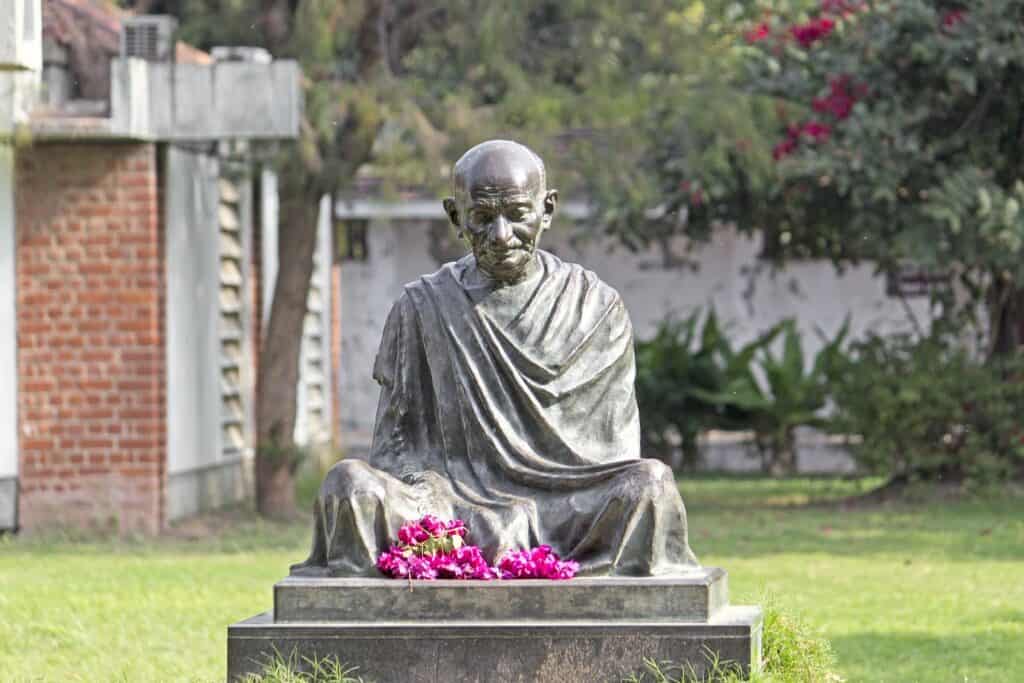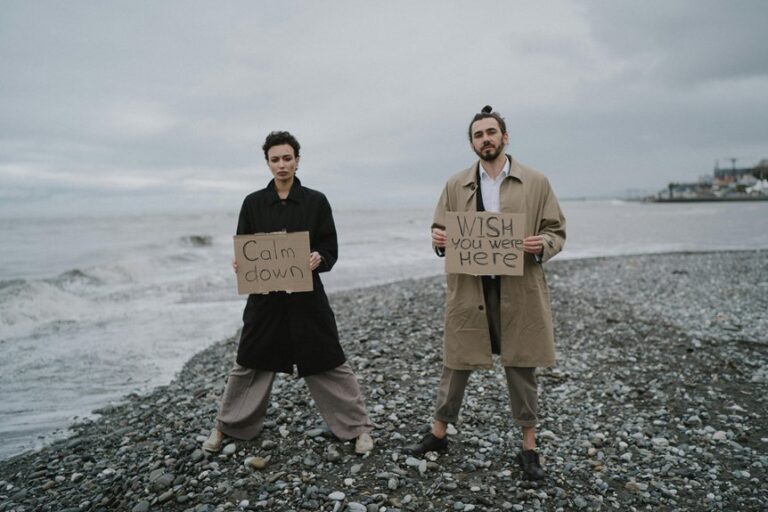
During an era where comfort zones are often synonymous with security, there exists a bold minority: risk-takers. These individuals, choosing uncertainty over predictability, pave their own paths, often reaping unparalleled rewards. Especially now, in a society that often rewards conformity, the question looms large: Are people who take risks more successful?
Yes, risk-takers often achieve greater success. They welcome challenges and opportunities, and by taking different types of risks, they lead to innovation and progress. However, success also depends on risk management, decision-making skills, and sometimes, luck, indicating that all risks may not pay.
But rather than based on an absolute answer, the following post goes deeper through a narrative written across diverse fields and individual lives. In fact, this post does more than just explain the reasons risk takers are successful; it invites you into a world where the bold thrive.
From business moguls to groundbreaking artists, we explore the perplexing relationship between risk and reward, and why stepping into the unknown might just be the most rational thing you do.
Is being a risk-taker a good trait?
Being a risk-taker can be a valuable trait, but it’s not universally good or bad. The value of risk-taking largely depends on context and execution.
In entrepreneurial or fast-paced environments, the ability to take calculated risks is often seen as an asset. It can lead to innovation, growth, and competitive advantage.
However, reckless or uninformed risk-taking can result in significant losses and setbacks. Therefore, it’s important to know that the key lies in being a calculated risk-taker who assesses situations carefully before acting.

Why are people who take risks more successful?
Success often lies beyond the comfort zone. Risk-taking is the bridge that can lead you there since it’s learning how to take calculated risks that create new opportunities rather than reckless ones.
Let’s examine how risk-takers are more likely to be successful and why taking chances is frequently associated with more success.
Adapting to uncertainty turns it into opportunity.
“Uncertainty is where things happen. It is where the opportunities — for success, for happiness, for really living — are waiting.” – Oliver Burkeman
Uncertainty is often viewed as a hindrance, but for risk-takers, it’s fertile ground for opportunity. They adapt to changing circumstances, turning uncertainty into a playground for innovation and growth.
Instead of being paralyzed by the unknown, successful people act, learn, and adapt. This proactive approach allows them to capitalize on opportunities that others might overlook due to fear or hesitation.
- Proactivity: Take charge of the situation.
- Innovation: Use uncertainty as a catalyst.
- Opportunistic: Spot and seize hidden opportunities.
Quick decisions free up time for action.
“Make decisions quickly and change them slowly if ever. Make decisions quickly based on your core beliefs and be slow to change them.” – Tony Robbins
Time is a finite resource. Risk-takers understand the value of making quick decisions to free up time for action. They don’t dawdle in indecision; they assess, decide, and act. This efficiency enables them to focus on execution, leaving room for adjustments if needed.
The idea is to go at a meaningful pace, guided by underlying beliefs and goals.
- Efficiency: Speed up decision-making processes.
- Purpose: Align decisions with core beliefs.
- Execution: Use saved time for meaningful action.

Redefining the box fuels innovation.
“Innovation is seeing what everybody has seen and thinking what nobody has thought.” – Dr. Albert Szent-Györgyi
Creating trends rather than following them is what innovation is all about. Risk-takers excel at this. They don’t just step outside the box; they reshape it entirely.
By challenging conventional wisdom and questioning the status quo, they create new paradigms that become the standard for others to follow. This is how they stay ahead, not just keeping up with change but driving it.
- Paradigm Shift: Create new norms.
- Questioning: Challenge existing frameworks.
- Leadership: Set the standard for others to follow.
Bold moves attract influential networks.
“Your vibe attracts your tribe.” – Unknown
Audacious deeds not only generate prospects but also draw like-minded people. When you’re willing to take risks, you become a magnet for others who share your ambition and vision. This is about creating strategic alliances, alongside social relationships, which is important for both personal development and business growth.
These alliances can offer new perspectives, resources, and avenues for collaboration, amplifying your own capabilities and influence.
- Strategic Alliances: Form partnerships that offer more than just social capital.
- Resource Sharing: Utilize the network for mutual benefit.
- Influence Amplification: A strong network increases your sphere of influence.
Optimal use of resources eliminates what-ifs.
“Waste your money and you’re only out of money, but waste your time and you’ve lost a part of your life.” – Michael LeBoeuf
Contrary to the stereotype, successful risk-takers are judicious in resource allocation. They understand that squandering resources—be it time, money, or talent—leads to regret and missed opportunities.
By strategically deploying these resources, they eliminate the paralyzing “what-ifs” and focus on actionable outcomes. This is not about hoarding resources but about utilizing them in a way that maximizes return on investment.
- Strategic Allocation: Use resources where they’ll have the most impact.
- Action Over Regret: Eliminate “what-ifs” by making each resource count.
- Maximize ROI: Aim for the best return on your investments, whether time or money.

Experience trumps theory.
“I hear and I forget, I see and I remember, I do and I understand.” – Confucius
Theory has its place, but nothing replaces the value of hands-on experience. Risk-takers inherently understand this. They’re not content to sit back and ponder hypotheticals; they plunge into real-world scenarios. This experiential learning provides them with nuanced understanding and practical skills that theory alone could never offer.
It’s this real-world experience that equips them to tackle challenges and make decisions with a level of expertise that sets them apart.
- Experiential Learning: Doing provides more insight than mere observation.
- Nuanced Understanding: Experience offers depth that theory lacks.
- Practical Expertise: Real-world challenges hone skills and judgment.
Risk builds resilience.
“The oak fought the wind and was broken, the willow bent when it must and survived.” – Robert Jordan
Resilience is a quality often honed in the furnace of risk. Those who take risks inevitably face challenges that require them to adapt, recover, and grow stronger.
Each challenge overcome is a lesson learned, contributing to a reservoir of resilience. This resilience is not just an emotional buffer but also a strategic asset, enabling quicker recovery from setbacks and a more agile response to new challenges.
- Adapt and Grow: Resilience is honed through overcoming challenges.
- Strategic Asset: Use resilience to navigate future risks more effectively.
- Quick Recovery: Resilience enables faster bounce-back from setbacks.

Setting trends keeps you ahead.
“It’s not about ideas. It’s about making ideas happen.” – Scott Belsky
Setting the trends gives you a competitive edge rather than just a social badge. Risk-takers often find themselves at the forefront of trends because they act on their ideas rather than just contemplating them.
This proactive approach keeps them ahead of the curve, making them not just participants but leaders in their fields. This leadership attracts opportunities and sets the stage for long-term success.
- Competitive Advantage: Being a trendsetter sets you apart, especially as a business owner.
- Proactive Leadership: Act on ideas to stay ahead.
- Attract Opportunities: Leadership in trends brings new avenues for success.
High risks can yield high rewards.
“Only those who will risk going too far can possibly find out how far one can go.” – T.S. Eliot
The potential for high rewards is often proportional to the level of risk involved. Risk-takers are keenly aware of this equation, and will almost always take a chance rather than play it safe when they know what is at stake. They don’t shy away from big risk opportunities that seem daunting but offer significant upside.
These calculated risks are not gambles but informed decisions made after weighing potential gains against possible losses. When these risks pay off, the rewards are often exponential, both in material and intangible terms.
- Risk-Reward Equation: Higher risks often mean higher potential rewards.
- Calculated Decisions: Risks are weighed against potential gains.
- Exponential Rewards: Success often brings both material and intangible benefits.

Each risk is a feedback loop for continuous improvement.
“Feedback is the breakfast of champions.” – Ken Blanchard
Risk-taking is not a one-off event but a continuous process of learning and improvement. Each risk provides valuable feedback, whether it’s a success or a failure. This feedback is crucial for refining strategies, improving decision-making, and enhancing overall performance.
Risk takers are more likely to understand the value of this feedback loop. They analyze outcomes, adjust their approaches, and are better prepared for future challenges. This iterative process is a cornerstone of their success.
- Analyze Outcomes: Understand the results of each risk.
- Refine Strategies: Use feedback to improve future actions.
- Iterative Learning: Continuously adapt and improve.
“Accountability breeds response-ability.” – Stephen R. Covey
Those who take risks are responsible not only for their deeds but also for the effects they have on the environment and society. This broader sense of accountability is often what sets them apart. They understand that each decision they make has ripple effects beyond immediate business outcomes.
By accepting complete responsibility, they reduce risks and increase credibility and trust. This social and environmental responsibility often translates into long-term success and sustainability.
- Broader Accountability: Extend responsibility to social and environmental impacts.
- Build Trust: Accountability enhances credibility.
- Long-Term Success: Social responsibility contributes to sustainability.
They act on the diminishing value of time-sensitive opportunities.
“I must govern the clock, not be governed by it.” – Golda Meir
Opportunities often come with a time limit. Risk-takers are acutely aware of the diminishing value of time-sensitive opportunities. They act swiftly and decisively to capitalize on these fleeting chances.
This sense of urgency is not born out of recklessness but a calculated understanding of the opportunity’s value and its time sensitivity. By acting in a timely manner, they often secure advantages that others miss, thereby gaining a competitive edge.
- Sense of Urgency: Act swiftly on time-sensitive opportunities.
- Calculated Decisions: Understand the diminishing value of opportunities.
- Competitive Edge: Timely action often secures advantages.
Are all risk-takers successful entrepreneurs?

No, not all risk-takers become successful entrepreneurs. While risk-taking is a crucial trait for entrepreneurial success, it’s not the only factor. Other elements like timing, market conditions, and execution also play significant roles. Risk-taking without strategy or adaptability can lead to failure.
Therefore, while risk-taking is often celebrated in entrepreneurial circles, it’s important to remember that it’s just one piece of a larger puzzle.
50 Famous Risk Takers
The annals of history are filled with individuals who dared to step off the beaten path, from starting a daring new business venture to defying the human limits. These risk-takers have not only achieved personal milestones but have also left an indelible impact on various fields.
Here, we spotlight 50 such individuals whose audacity rewrote the rules and redefined success.
Elon Musk: Launched SpaceX with the audacious goal of colonizing Mars.
Elon Musk, the entrepreneur behind Tesla and PayPal, founded SpaceX in 2002 with a singular vision: to make life multi-planetary. The idea of colonizing Mars was not just a lofty dream but a strategic goal. Musk invested his own money into SpaceX, facing immense skepticism. The early years were fraught with failure; rockets exploded, and critics scoffed. Yet, Musk persisted. His risk paid off when SpaceX became the first privately funded company to send a spacecraft to orbit and return it safely to Earth. Today, SpaceX is a key player in space exploration, having launched numerous satellites, resupplied the International Space Station, and even sent astronauts into space. The audacity to envision a future beyond Earth and act upon it has made Musk a quintessential risk-taker.
Richard Branson: Founded Virgin Galactic to commercialize space tourism.
Richard Branson, the maverick entrepreneur behind the Virgin brand, has always been fascinated by space. In 2004, he founded Virgin Galactic with the aim of making space tourism a reality. The venture was met with skepticism, given the technical challenges and astronomical costs involved. Branson invested millions into research and development, facing setbacks including a fatal crash during a test flight. Despite the hurdles, Branson remained committed. His risk was validated in 2021 when he himself flew to the edge of space aboard a Virgin Galactic spacecraft. The flight marked a significant milestone in commercial space travel and solidified Branson’s reputation as a daring risk-taker.
Warren Buffett: Invested in Coca-Cola during the 1987 stock market crash.
Warren Buffett, the Oracle of Omaha, is known for his savvy investment strategies. In 1987, during a period of market volatility known as Black Monday, Buffett made a counterintuitive move. He invested in Coca-Cola, a brand he believed had enduring value. Many questioned the wisdom of investing during a market crash, but Buffett’s risk was calculated. His investment in Coca-Cola not only weathered the storm but also yielded substantial returns over the years. Today, it stands as one of the most profitable investments in the history of Berkshire Hathaway, Buffett’s investment company. His ability to see long-term value where others saw short-term risk underscores his reputation as a legendary risk-taker.
Steve Jobs: Introduced the iPhone, disrupting multiple industries.
Steve Jobs was no stranger to taking risks. In 2007, he announced the iPhone, a device that combined a phone, an iPod, and an internet communicator. The tech industry was skeptical. Smartphones existed, but none had attempted what Jobs envisioned. The iPhone was a gamble not just for Apple but for Jobs himself, who staked his reputation on its success. The risk was monumental, involving years of secretive development and billions in investment. When the iPhone finally launched, it revolutionized not just the smartphone industry but also computing, photography, and software distribution. Jobs’ willingness to disrupt established markets and consumer behavior marks him as one of the great risk-takers in business history.
Amelia Earhart: First woman to fly solo across the Atlantic.
Amelia Earhart was a pioneer in aviation at a time when flying was a risky endeavor, even more so for women. In 1932, she undertook a daring mission to become the first woman to fly solo across the Atlantic Ocean. The flight was perilous, fraught with mechanical issues and turbulent weather. Earhart’s skill and determination saw her through. She landed in Ireland, making history and inspiring a generation of female aviators. Her achievement was not just a milestone in aviation but also a breakthrough in challenging gender norms of her time. Earhart’s courage to venture into uncharted skies solidifies her place as a legendary risk-taker.
Ernest Shackleton: Led the Endurance expedition to Antarctica.
Ernest Shackleton, a British explorer, led the ill-fated Endurance expedition to Antarctica in 1914. The goal was to cross the Antarctic continent, a feat never before attempted. The risks were immense, from extreme weather to uncharted terrain. Shackleton’s ship, the Endurance, was trapped and eventually crushed by ice. Despite the dire circumstances, Shackleton led his crew on a perilous journey across ice floes and stormy seas to reach safety. All crew members survived, largely due to Shackleton’s leadership. His ability to manage risk in the face of almost certain doom makes him a study of resilience and daring.
Malala Yousafzai: Advocated for girls’ education in Taliban-controlled areas.
Malala Yousafzai, a Pakistani activist, took immense risks to advocate for girls’ education in areas controlled by the Taliban. Speaking out meant risking her life, a fact made brutally clear when she was shot in the head by a Taliban gunman in 2012. Miraculously, Malala survived and continued her advocacy, undeterred by the risks. Her courage earned her the Nobel Peace Prize in 2014, making her the youngest-ever laureate. Malala’s advocacy has had a global impact, influencing education policy and inspiring countless young people. Her willingness to risk her life for the cause she believes in makes her an extraordinary risk-taker.
Nelson Mandela: Fought apartheid, knowing it could cost him his life.
Nelson Mandela’s fight against apartheid in South Africa was a life-risking endeavor. Arrested and imprisoned for 27 years, Mandela knew the stakes were high. Yet, he remained steadfast in his commitment to justice and equality. His leadership was instrumental in dismantling apartheid and fostering reconciliation between communities. In 1994, Mandela became South Africa’s first Black president, a testament to his resilience and courage. His willingness to risk his life for the greater good has made him an enduring symbol of resistance and bravery.
Marie Curie: Pioneered research in radioactivity despite societal norms.
Marie Curie broke multiple barriers in her lifetime, not the least of which was being a woman in the male-dominated field of science. She conducted groundbreaking research on radioactivity, a term she herself coined. Curie faced numerous obstacles, from limited resources to societal prejudice. Despite this, she became the first woman to win a Nobel Prize and remains the only person to win Nobel Prizes in two different scientific fields. Her discoveries revolutionized medical science and laid the groundwork for future research. Curie’s audacity to challenge norms and venture into the unknown makes her a seminal risk-taker.
Howard Schultz: Expanded Starbucks from a single store to a global brand.
Howard Schultz transformed Starbucks from a single Seattle store into a global coffee empire. When Schultz first proposed the idea of Starbucks as a “third place” between work and home, many were skeptical. The coffee shop model was untested on a large scale, and Schultz faced initial resistance even within the company. Undeterred, he acquired Starbucks in 1987 and began expanding. The risk was significant, involving substantial investment and a radical shift in business strategy. Today, Starbucks has over 30,000 locations worldwide, validating Schultz’s vision and risk-taking prowess.
George Mallory: Climbed Everest in 1924, when it was considered unclimbable.
George Mallory was a British mountaineer who took on the colossal challenge of climbing Mount Everest in the early 20th century. At that time, Everest was considered the ultimate peak, unclimbable by many experts. Mallory was part of three British expeditions to Everest, culminating in his 1924 attempt. Armed with rudimentary equipment and guided by sheer determination, he and his climbing partner, Andrew Irvine, made their final ascent. They were last seen just 800 meters from the summit, and it remains unclear if they reached it. Mallory’s body was found in 1999, but the mystery endures. His daring approach to what was considered an insurmountable challenge makes him a legendary risk-taker.
Nikola Tesla: Invested in alternating current, opposing Edison’s direct current.
Nikola Tesla, an inventor and electrical engineer, took a significant risk by investing his time and resources in alternating current (AC) technology. At the time, Thomas Edison’s direct current (DC) systems were the standard. Tesla faced not only technical challenges but also a public relations war waged by Edison. Despite these obstacles, Tesla partnered with George Westinghouse and successfully demonstrated that AC was a more efficient and safer method for electrical power transmission. Their system eventually won out, and AC became the global standard. Tesla’s willingness to go against the grain and challenge established norms solidifies his status as a risk-taker.
Kathryn Bigelow: First woman to win an Academy Award for Best Director.
Kathryn Bigelow shattered the glass ceiling in Hollywood when she became the first woman to win an Academy Award for Best Director in 2010. The film industry, largely male-dominated, had never before recognized a woman for this prestigious award. Bigelow won for her film “The Hurt Locker,” a war drama that was itself a risky project given its controversial subject matter and independent status. Her win was more than a personal achievement; it was a milestone for gender equality in the film industry. Bigelow’s courage to navigate a male-dominated landscape and tackle challenging subjects makes her a noteworthy risk-taker.
Frida Kahlo: Challenged gender norms through her art and lifestyle.
Frida Kahlo, a Mexican artist, was a risk-taker in both her professional and personal life. Her art often explored taboo subjects like pain, suffering, and sexuality, challenging the societal norms of her time. Kahlo also defied gender roles, openly engaging in relationships with both men and women and adopting a style of dress that blended masculine and feminine elements. Her work was not widely recognized during her lifetime, but her risk-taking paved the way for later generations of artists and activists. Today, she is celebrated as an icon of feminism and artistic innovation.
Julian Assange: Founded WikiLeaks, risking political backlash.
Julian Assange took a monumental risk when he founded WikiLeaks in 2006. The platform, designed to publish classified, censored, or otherwise restricted information, quickly drew the ire of governments worldwide. Assange knew that his actions could result in criminal charges, extradition, or worse. Despite this, WikiLeaks released a series of high-profile leaks that exposed government and corporate misconduct. The consequences for Assange have been severe, including years of confinement in the Ecuadorian Embassy in London and ongoing legal battles. Yet, his actions have sparked global debates about transparency, freedom of the press, and government accountability.
Satoshi Nakamoto: Created Bitcoin, challenging traditional financial systems.
The identity of Satoshi Nakamoto, the creator of Bitcoin, remains a mystery. However, the risk taken in launching a decentralized digital currency was immense. Bitcoin was introduced in 2009 as an alternative to traditional currencies and financial systems. It faced skepticism, regulatory scrutiny, and outright bans in some countries. Despite these challenges, Bitcoin has grown exponentially, inspiring a new wave of cryptocurrencies and blockchain technologies. The risk of creating an unregulated, decentralized currency could have led to legal repercussions, making Nakamoto’s venture a high-stakes gamble that paid off.
Jacques Cousteau: Pioneered scuba diving and underwater exploration.
Jacques Cousteau was a French naval officer, explorer, and filmmaker who took the risk of venturing into an environment largely unknown at the time: the ocean depths. Cousteau co-developed the Aqua-Lung, the first successful open-circuit scuba diving equipment, allowing for deeper and longer underwater exploration. He conducted numerous expeditions, documented in films and books, that provided invaluable data on marine biology and underwater geology. His work was not without danger, including the risks of deep-sea diving and the challenges of underwater filming. Yet, his contributions have been foundational in the fields of oceanography and environmental activism.
Jane Goodall: Lived with wild chimpanzees to study their behavior.
Jane Goodall, a British primatologist, took the unprecedented step of living among wild chimpanzees in Tanzania to study their behavior. In the 1960s, this was a radical approach; fieldwork in primatology was not commonly conducted in such an immersive manner. Goodall faced numerous risks, from the dangers of the jungle to the unpredictability of her primate subjects. Her methods were initially criticized by the scientific community but ultimately revolutionized our understanding of primates and their social structures. Goodall’s willingness to take risks in the name of scientific discovery has made her a legend in her field.
Reed Hastings: Pivoted Netflix from DVD rentals to streaming.
Reed Hastings, co-founder of Netflix, took a significant risk when he transitioned the company from a DVD rental service to a streaming platform. At the time, streaming was a nascent technology, and the shift required substantial investment in content and infrastructure. Many questioned the move, especially as Netflix faced stiff competition from established media companies. However, the risk paid off. Today, Netflix is a global entertainment powerhouse with over 200 million subscribers. Hastings’ gamble to pivot at a critical juncture was a defining moment for both the company and the entertainment industry at large.
Joan of Arc: Led French troops in the Hundred Years’ War at age 17.
Joan of Arc, a French peasant girl, took extraordinary risks when she claimed to have been divinely instructed to drive the English out of France during the Hundred Years’ War. At just 17, she convinced the Dauphin of France to allow her to lead French troops. The very idea was audacious and fraught with peril, given her lack of military training and her gender. Despite these obstacles, Joan demonstrated remarkable leadership and tactical skill, achieving several important victories before her capture and execution by the English. Her actions turned the tide of the war in favor of the French and cemented her status as a national heroine and a daring risk-taker.
Larry Page and Sergey Brin: Developed Google’s search algorithm in a garage.
In the late 1990s, Larry Page and Sergey Brin, two Stanford Ph.D. students, embarked on a project that would revolutionize the way we access information. They developed a search algorithm called PageRank in a garage, a setting far removed from corporate R&D labs. The tech industry was already crowded with search engines, but none were particularly effective. Page and Brin’s algorithm promised to rank web pages based on their relevance and quality, a novel approach at the time. The risk was substantial, involving not just the complexity of the algorithm but also the challenge of turning it into a viable business. Today, Google is a tech behemoth, dominating not just search but also various other online services. The audacity to tackle a problem that many thought was already solved makes Page and Brin standout risk-takers.
Mark Zuckerberg: Dropped out of Harvard to focus on Facebook.
Mark Zuckerberg was a Harvard sophomore when he launched Facebook, a social networking site initially intended for college students. The platform quickly gained traction, and Zuckerberg faced a choice: stay in school or focus on the burgeoning business. He chose the latter, dropping out of one of the world’s most prestigious universities to pursue an uncertain venture. The risk was significant, both financially and reputationally. However, the gamble paid off. Facebook expanded rapidly, going public in 2012 and becoming one of the most valuable companies globally. Zuckerberg’s decision to leave a secure path for an uncertain future underscores his risk-taking ability.
Oprah Winfrey: Launched her own network despite industry skepticism.
Oprah Winfrey, already a household name for her talk show, took a considerable risk when she decided to launch her own television network, OWN (Oprah Winfrey Network), in 2011. The media landscape was already crowded, and many industry experts were skeptical about the network’s viability. Oprah invested significant personal capital and time into the venture, facing initial setbacks including low viewership and financial losses. However, she restructured the network’s programming and management, turning it into a profitable venture. Her willingness to invest in her vision, despite industry skepticism and initial setbacks, marks her as a significant risk-taker.
Alexander Fleming: Discovered penicillin, revolutionizing medicine.
Alexander Fleming, a Scottish bacteriologist, made a discovery that would change the course of medicine. In 1928, he noticed that a mold called Penicillium notatum killed off bacteria. The discovery was accidental, but the implications were enormous. At the time, there were no effective treatments for bacterial infections, and the medical community was skeptical about the potential of antibiotics. Fleming faced challenges in isolating penicillin and proving its efficacy. Despite these hurdles, he persisted, and his discovery eventually led to the mass production of antibiotics. Fleming’s willingness to pursue an uncertain scientific discovery makes him a pivotal risk-taker in medical history.
Rosa Parks: Refused to give up her bus seat, sparking the Civil Rights Movement.
Rosa Parks, an African American seamstress, took a monumental risk on December 1, 1955, when she refused to give up her seat to a white man on a segregated bus in Montgomery, Alabama. Her act of civil disobedience led to her arrest and became a catalyst for the Montgomery Bus Boycott, a pivotal event in the Civil Rights Movement. Parks knew the risks involved; she could have faced severe legal repercussions or even violence. Yet, she chose to take a stand, literally sitting down to challenge an unjust system. Her courage ignited a movement and changed the course of American history, making her a seminal risk-taker in the fight for civil rights.
Jeff Bezos: Quit a lucrative job to start Amazon, an online bookstore.
In 1994, Jeff Bezos made a decision that baffled many of his peers. He quit a lucrative job in investment banking to start an online bookstore. At the time, the internet was still in its infancy, and the idea of online retail was untested. Bezos started Amazon in his garage with a handful of employees, facing immense risks, including financial instability and market skepticism. Despite these challenges, Bezos had a vision for Amazon that went beyond books. Today, Amazon is a global retail giant, and Bezos is one of the world’s wealthiest individuals. His willingness to leave a secure job to venture into the unknown makes him a quintessential risk-taker.
Christopher Columbus: Sailed west to find a new route to Asia.
In 1492, Christopher Columbus took a risk that would change the course of history. He set sail from Spain with three ships, aiming to find a westward route to Asia. The journey was fraught with dangers, from storms to potential mutiny by his crew. Moreover, prevailing wisdom at the time held that such a voyage was foolhardy. Columbus did not find a route to Asia but instead landed in what is now known as the Americas. His voyages opened the door for European exploration and colonization of the New World. Despite the controversies surrounding his legacy, there’s no denying that Columbus was a risk-taker whose actions had far-reaching consequences.
Henry Ford: Introduced assembly line production, transforming manufacturing.
Henry Ford revolutionized the automobile industry and manufacturing as a whole by introducing assembly line production techniques. Before Ford, automobiles were luxury items, handcrafted and expensive. Ford’s innovation was not just technical but also conceptual; he envisioned a car for the masses. Implementing the assembly line was risky, requiring significant investment and a complete overhaul of existing manufacturing processes. The gamble paid off. The assembly line dramatically reduced production costs, making automobiles affordable for average Americans. Ford’s willingness to disrupt the status quo transformed not just his company but also the American way of life.
Edmund Hillary and Tenzing Norgay: First to summit Mount Everest.
In 1953, New Zealander Edmund Hillary and Sherpa Tenzing Norgay achieved what many thought was impossible: they reached the summit of Mount Everest. The risks were immense, from extreme weather conditions to the physical and mental toll of high-altitude climbing. Previous expeditions had failed, sometimes with fatal consequences. Yet, Hillary and Norgay pressed on, equipped with determination and innovative oxygen systems. Their successful ascent inspired a new generation of mountaineers and adventurers, proving that even the loftiest goals are attainable. Their risk-taking spirit is immortalized in the annals of exploration history.
Bill Gates: Left Harvard to start Microsoft, aiming to put a PC in every home.
Bill Gates took a significant risk when he dropped out of Harvard University to start Microsoft with his friend Paul Allen. In the mid-1970s, the personal computer was a novelty, and the software industry was virtually non-existent. Gates and Allen had a vision: a computer on every desk and in every home. To realize this vision, they developed an operating system that would become the backbone of personal computing. The risk was substantial, involving not just the development of new technology but also the challenge of creating a market for it. Today, Microsoft is a global tech giant, and personal computers are ubiquitous. Gates’ decision to leave an Ivy League education for an uncertain venture epitomizes risk-taking in the entrepreneurial world.
Ayrton Senna: Pushed the Limits of Formula One Racing
Ayrton Senna, a Brazilian racing driver, redefined the boundaries of Formula One. Known for his aggressive driving style and unmatched focus, Senna’s approach was both admired and criticized. The sport was already dangerous, but Senna’s willingness to push himself and his car to the limits elevated the risks involved. His daring overtakes and pole positions are legendary, but they came with high stakes, including crashes and controversies. Despite the inherent risks, Senna won three Formula One World Championships and is considered one of the greatest drivers in the history of the sport. His approach to racing was a calculated gamble that paid off in victories but also raised questions about the ethics of risk-taking in a dangerous sport.
J.K. Rowling: Wrote “Harry Potter” While Struggling Financially
J.K. Rowling was an unemployed single mother when she began writing the “Harry Potter” series. Financially strapped and emotionally drained, Rowling faced significant risks in dedicating time to a children’s book. The literary world is notoriously hard to break into, and children’s fantasy was not considered a lucrative genre. Despite these challenges, Rowling persisted, often writing in cafes while her daughter slept beside her. The result was a series that not only achieved monumental commercial success but also captivated readers of all ages. Rowling’s gamble to invest in her creative vision, despite financial instability, is a testament to her risk-taking spirit.
Walt Disney: Created Disneyland Despite Numerous Setbacks
Walt Disney had already made a name for himself in animation when he decided to venture into theme parks. The idea of Disneyland was met with skepticism from investors and industry experts. Disney faced numerous setbacks, including funding issues and construction delays. The risk was not just financial but also reputational. However, Disney was undeterred. When Disneyland finally opened in 1955, it set the standard for theme parks worldwide. Disney’s willingness to venture into an untested market and overcome multiple obstacles highlights his propensity for calculated risk-taking.
Chuck Yeager: First to Break the Sound Barrier in Level Flight
Chuck Yeager, a U.S. Air Force pilot, made history in 1947 by becoming the first person to break the sound barrier in level flight. The feat was considered extremely dangerous due to the unknown effects of supersonic speed on aircraft. Yeager’s plane, the Bell X-1, was essentially a flying experiment, and the risks were life-threatening. Despite the dangers, Yeager successfully flew faster than the speed of sound, opening new possibilities for aviation and space exploration. His willingness to put his life on the line for scientific advancement makes him a notable risk-taker.
Tim Berners-Lee: Invented the World Wide Web, Making the Internet Accessible
Tim Berners-Lee, a British computer scientist, took a significant risk when he decided to develop the World Wide Web. In the late 1980s, the internet existed but was not user-friendly. Berners-Lee envisioned a system that would make the Internet accessible to everyone. The project was ambitious and faced technical and adoption hurdles. Despite these challenges, Berners-Lee persisted and introduced the World Wide Web in 1991. His invention transformed the way we access and share information, impacting nearly every aspect of modern life. The risk of dedicating time and resources to an unproven concept that ultimately revolutionized the digital world marks him as a significant risk-taker.
Simone Biles: Redefined Gymnastics with Unprecedented Moves
Simone Biles, an American gymnast, has consistently pushed the boundaries of her sport. Known for performing complex moves with precision, Biles has taken risks that few gymnasts dare to attempt. Each new move carries the risk of injury or failure, but Biles has not let that deter her. Her groundbreaking performances have earned her numerous Olympic and World Championship medals, making her one of the most decorated gymnasts in history. Biles’ willingness to take risks in pursuit of athletic excellence sets her apart in the world of gymnastics.
Elvis Presley: Brought Rock ‘n’ Roll to the Mainstream
Elvis Presley, the “King of Rock ‘n’ Roll,” took a significant risk when he decided to bring a then-fringe musical genre into the mainstream. In the 1950s, rock ‘n’ roll was considered rebellious and was not readily accepted by mainstream audiences. Presley faced backlash from conservative groups and risked alienating himself from established music circles. Despite these challenges, he persisted, achieving commercial success and changing the landscape of American music forever. His risk-taking paved the way for future generations of musicians and altered the course of music history.
Ada Lovelace: Wrote the First Computer Program in the 1840s
Ada Lovelace, an English mathematician, is credited with writing the world’s first computer program in the 1840s. At a time when the roles of women were severely restricted and the field of computing was in its infancy, Lovelace collaborated with Charles Babbage on his proposed general-purpose computer, the Analytical Engine. She saw the machine’s potential beyond mere calculations and wrote an algorithm intended for the engine. The risks were manifold: societal norms, the unproven nature of the technology, and the challenge of conceptualizing programming before it officially existed. Her work laid the foundation for modern computing, making her a pioneering risk-taker.
Barack Obama: First African American President of the United States
Barack Obama broke racial barriers when he became the first African-American President of the United States in 2008. The political landscape was fraught with racial tensions, and the idea of a Black president was polarizing. Obama faced immense scrutiny and carried the weight of not just political but also cultural and racial expectations. Despite these pressures, he won the election and served two terms, implementing policies that have had a lasting impact on the country. His decision to run for the highest office in a racially divided nation marks him as a significant risk-taker.
Greta Thunberg: Became a Climate Activist at Age 15, Inspiring Global Movements
Greta Thunberg was just 15 years old when she started skipping school to protest outside the Swedish parliament, demanding stronger action on climate change. Her “School Strike for Climate” could have easily gone unnoticed, but instead, it sparked a global movement. Thunberg faced criticism and mockery, not just from peers but also from political leaders. The risk was not just personal but also represented a challenge to established norms about who gets to have a voice in global issues. Despite the odds, her activism has galvanized a new generation of climate activists, making her a defining risk-taker of her time.
Alan Turing: Cracked the Enigma Code, Shortening World War II
Alan Turing, a British mathematician and computer scientist, played a pivotal role in cracking the Enigma code used by Nazi Germany during World War II. The task was monumental and fraught with challenges, including the complexity of the code and the immense pressure of wartime secrecy. Turing’s work at Bletchley Park was not just intellectually demanding but also carried the weight of lives and geopolitical outcomes. His contributions to breaking the code are credited with shortening the war and saving countless lives. Turing took significant risks, both professionally and personally, to achieve this feat, solidifying his legacy as a risk-taker who changed the course of history.
Coco Chanel: Revolutionized Women’s Fashion with the “Little Black Dress”
Coco Chanel, a French fashion designer, took the fashion world by storm when she introduced the “little black dress” in the 1920s. At a time when women’s fashion was dominated by elaborate and restrictive garments, Chanel’s simple and elegant design was revolutionary. The fashion industry is notoriously fickle, and introducing such a radical departure from the norm was a gamble. Chanel’s risk paid off, and the little black dress became a timeless staple in women’s fashion. Her willingness to challenge established norms and take risks transformed not just her brand but also the way women dressed.
Michael Jordan: Left Basketball to Play Baseball, Then Returned to Win More Titles
Michael Jordan, arguably the greatest basketball player of all time, shocked the world when he retired from basketball to pursue a career in baseball. The move was considered a huge risk, given his lack of professional baseball experience and his unparalleled success in basketball. Jordan faced immense scrutiny and skepticism but remained committed to his new path. Although his baseball career was short-lived, he returned to basketball and won three more NBA championships. Jordan’s risk-taking nature is evident in his willingness to leave a successful career to pursue a new challenge, only to return and achieve even greater heights.
Pablo Picasso: Co-founded the Cubist Movement, Altering Art History
Pablo Picasso, a Spanish painter and sculptor, took a significant risk when he co-founded the Cubist movement. Traditional art forms were deeply entrenched, and Cubism was a radical departure that fragmented and abstracted subjects. The art world is often resistant to change, and Picasso risked not only his reputation but also his career. Despite initial resistance, Cubism became one of the most influential art movements of the 20th century. Picasso’s willingness to take risks and challenge the status quo had a lasting impact on art history.
Harriet Tubman: Escaped Slavery and Led Others to Freedom via the Underground Railroad
Harriet Tubman, born into slavery, took unimaginable risks to escape and then return to help others gain their freedom. Each mission on the Underground Railroad was fraught with danger, including capture and the severe punishments that would follow. Tubman’s actions were not just a personal risk but also a challenge to the deeply ingrained institution of slavery. Her courage and leadership resulted in the freedom of hundreds of slaves and earned her a place in history as a risk-taker who fought for justice and human rights.
Muhammad Yunus: Introduced Microcredit, Changing Traditional Banking
Muhammad Yunus, a Bangladeshi social entrepreneur, revolutionized the banking industry by introducing the concept of microcredit. Traditional banks were reluctant to lend to the poor, citing the risks involved. Yunus saw an opportunity to empower impoverished individuals by providing small loans without requiring collateral. The risk was substantial, given the skepticism from traditional financial institutions and the untested nature of the microcredit model. Despite these challenges, Yunus’ Grameen Bank became a success, and the concept of microcredit spread globally. His risk-taking has had a profound impact on poverty alleviation and social entrepreneurship.
Leonardo da Vinci: Ventured into Anatomy, Art, and Engineering
Leonardo da Vinci was a polymath who took risks in multiple fields, from art and anatomy to engineering. In an age when specialization was the norm, da Vinci’s broad interests were in themselves a risk. His anatomical studies were particularly risky due to the religious and social taboos of the time. Despite the potential for controversy and backlash, da Vinci pursued his varied interests with zeal. His contributions have had a lasting impact across multiple disciplines, making him a quintessential risk-taker.
Stephen Hawking: Researched Black Holes Despite Debilitating Illness
Stephen Hawking, a theoretical physicist, did not let a debilitating illness stop him from making groundbreaking contributions to the field of cosmology. Diagnosed with ALS, a condition that left him almost completely paralyzed, Hawking continued his research on black holes and the nature of the universe. Conducting high-level scientific research under such conditions was a risk that few would be willing to take. His work has had a significant impact on our understanding of the universe and serves as an example of risk-taking in the face of personal adversity.
Sylvester Stallone: Sold His Dog to Fund “Rocky,” Then Bought It Back After Success
Sylvester Stallone was a struggling actor when he wrote the screenplay for “Rocky.” With little money and few opportunities, he took a significant risk by insisting on starring in the film himself. To fund the project, he even sold his beloved dog. The film’s success was far from guaranteed, and Stallone risked both financial and emotional investment. “Rocky” became a blockbuster, earning Stallone critical and commercial success. His risk-taking paid off, launching him into stardom and enabling him to buy back his dog. Stallone’s story is a classic example of taking a gamble on oneself and winning big.
These stories illustrate the transformative power of risk-taking. Each individual faced significant challenges and uncertainties but chose to take calculated risks that ultimately led to groundbreaking achievements. Their legacies serve as compelling testaments to the impact that one person’s willingness to take risks can have on the world.

Conclusion
Now, are people who take risks more successful? The evidence is compelling.
The insights and the famous risk-takers we’ve examined didn’t merely play with danger; they welcomed it as a constant companion on their path to unparalleled achievements.
While risk-taking is no guarantee of success, it is a common thread that weaves through the fabric of extraordinary lives. If you’re looking for a sign to take that leap, consider this article your nudge towards the edge of possibility.
FAQs
Q: Why risk takers are winners?
A: Risk-takers often emerge as winners because they seize opportunities that others avoid. They’re willing to step out of their comfort zones and take calculated risks that can lead to significant rewards. This proactive approach allows them to stay ahead of the curve, setting trends rather than following them. However, it’s essential to note that not all risks lead to success; the key is in taking informed, calculated risks.
Q: Are risk-takers intelligent?
A: Risk-taking and intelligence are not directly correlated, but they can complement each other. Intelligent individuals may use their analytical skills to assess and take calculated risks effectively. However, risk-taking also involves emotional intelligence, including the ability to manage stress and make quick decisions. So, while intelligence can aid in effective risk-taking, it’s not the sole determining factor.
Q: Are billionaires risk takers?
A: Many billionaires are known for taking calculated risks, but it’s not a universal trait. Some have built their fortunes through steady, conservative investments or by inheriting wealth. However, those who have amassed significant wealth through entrepreneurial ventures often share a willingness to take calculated risks. It’s this balance of risk and reward that often propels them to billionaire status.
Q: Why is risk-taking important for success?
A: Risk-taking is important for success because it allows individuals to step out of their comfort zones and take the leap of faith necessary to innovate, grow, and find success in their personal and professional endeavors.
Q: What are some reasons risk-takers are more likely to be successful?
A: Risk-takers are more likely to be successful because they are willing to take calculated risks, embrace failure as an opportunity to learn, and have the confidence to take smart risks that can lead to business growth and personal development.
Q: How does risk as an entrepreneur help in business growth?
A: Risk as an entrepreneur helps in business growth by encouraging individuals to take the necessary risks to innovate, explore new opportunities, and take the bold steps needed to build successful businesses and ventures.
Q: What are some key traits of successful people when it comes to risk-taking?
A: Successful people demonstrate a willingness to accept risk, feel more comfortable taking risks, and have the confidence to take smart risks that can lead to growth and success, even in the face of potential failure.
Q: Is it better to take calculated risks or play it safe?
A: It is often better to take calculated risks rather than play it safe, as taking calculated risks allows individuals to explore new ideas, embrace opportunities for growth, and take the necessary steps to find success in their personal and professional lives.
Q: How can one build the confidence to take risks?
A: One can build the confidence to take risks by embracing failure as an opportunity to learn, taking the moment to evaluate and take smart risks, and recognizing that confidence in taking risks is essential for personal and professional growth.
Q: What can happen if someone is afraid of failure and avoids risk?
A: If someone is afraid of failure and avoids risk, they may miss out on valuable opportunities for growth and success, as well as the chance to innovate, explore new ideas, and take the necessary risks to achieve their goals and aspirations.
Q: How do unnecessary risks differ from smart risks?
A: Unnecessary risks are those that are taken without careful consideration or evaluation, while smart risks are calculated decisions that are made with the intention of achieving growth, exploring new opportunities, and finding success in personal and professional endeavors.
Q: What role do risks play in achieving success?
A: Risks play a crucial role in achieving success by providing individuals with the opportunities to innovate, take the necessary leaps of faith, and embrace the challenges that come with exploring new ideas and ventures that can lead to personal and professional growth.
Q: How can one overcome a fear of taking risks?
A: One can overcome a fear of taking risks by building confidence through embracing failure as an opportunity to learn, recognizing that risk is essential for growth and innovation, and taking small steps outside of their comfort zone to gradually build their risk tolerance and willingness to take calculated risks.









